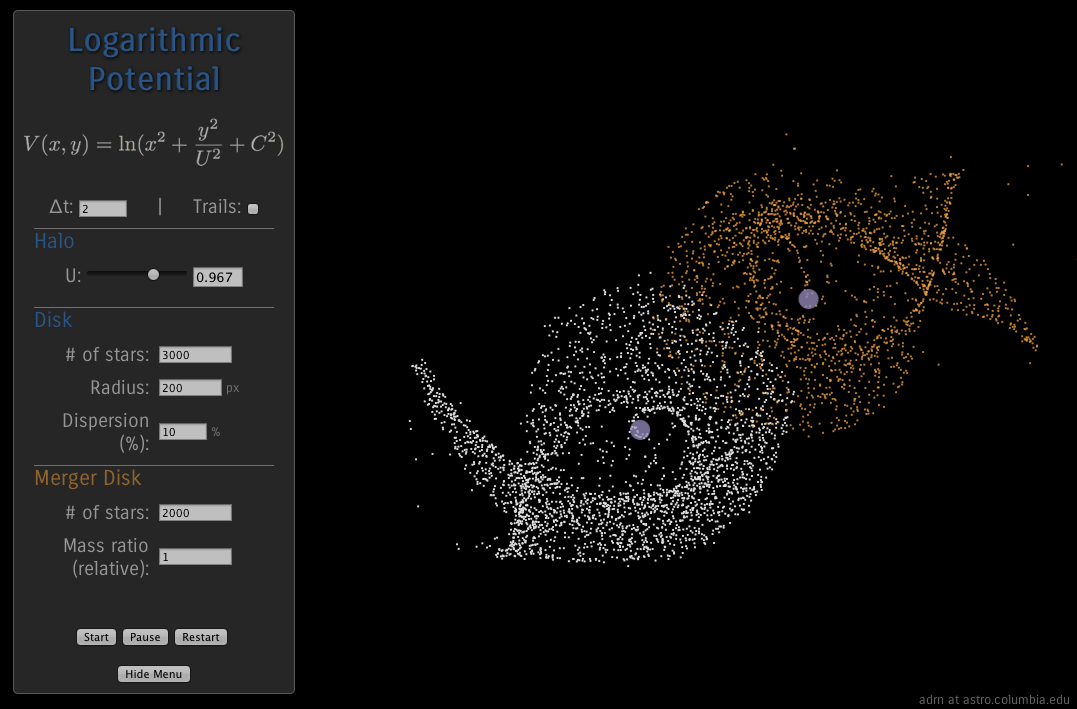An online simulator for galactic collisions (Adrian Price-Whelan/Columbia University)
Have you ever had the desire to build your own galaxies, setting your own physical parameters and including as many stars as you want, and then smash them together like two toy cars on a track? Well, now you can do just that from the comfort of your own web browser (and no waiting billions of years for the results!)
This interactive online app by Adrian Price-Whelan lets you design a galaxy, including such parameters as star count, radius and dispersion rate, and then create a second galaxy to fling at it. Clicking and dragging on the black area will send the invading galaxy on its course, letting you watch the various results over and over again. (If those SMBH’s hit, look out!)
 In reality many galaxies have gone through (or are going through, from our perspective) such collision events, our own Milky Way being no exception. In fact, the Milky Way is on course to collide with the Andromeda Galaxy… in about 4 billion years.
In reality many galaxies have gone through (or are going through, from our perspective) such collision events, our own Milky Way being no exception. In fact, the Milky Way is on course to collide with the Andromeda Galaxy… in about 4 billion years.
So while we wait patiently for that, this is just a bit of addictive fun to distract you from your Cyber Monday shopping spree. Enjoy!
(Source: Columbia University Astronomy & Physics)
Inset image: Hubble interacting galaxies UGC 9618, 450 million light-years away. Credit: NASA, ESA, the Hubble Heritage (STScI/AURA)-ESA/Hubble Collaboration, and A. Evans (University of Virginia, Charlottesville/NRAO/Stony Brook University)


There’s an added bonus. If you stare at the initial Galaxy for a few seconds and then look at something else, reality gets distorted. Works best by looking at the setup panel top left of screen. Very cool optical illusion.
Oh. My galaxies ripped each other apart and the central blackholes both went flying off in opposite directions. Oopps.
That is my experience as well. If I start the second galaxy out at a very small velocity, either towards or away from the central galaxy, a merger causes the two to suddenly race off. I can get the two centers to enter into a close orbit, but if they merge or get close they escape from the scene. I think this is a numerical limit of some type.
LC
Still, I’ve had a lot of fun pushing my machine and browser to drink with ridiculous parameters! 🙂
Try dropping the second disk directly on top of the first with a 1:1 mass ratio and watch that SMBH go!